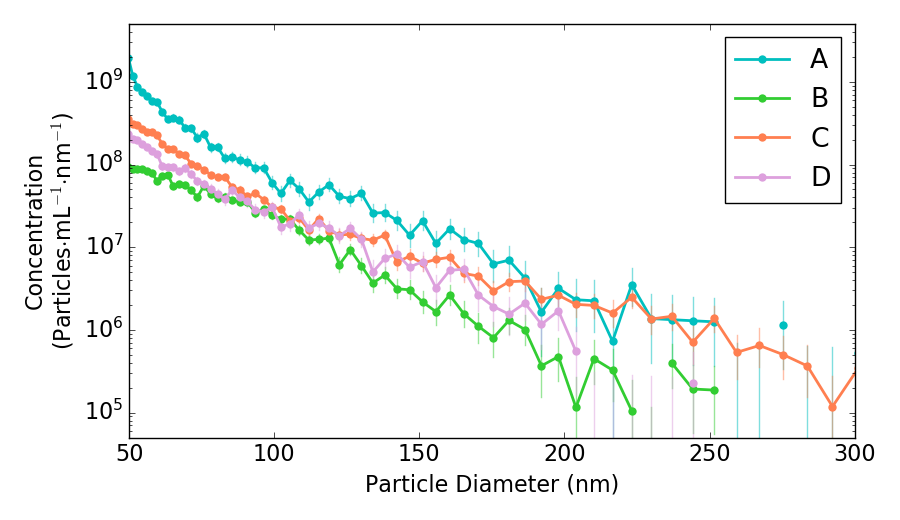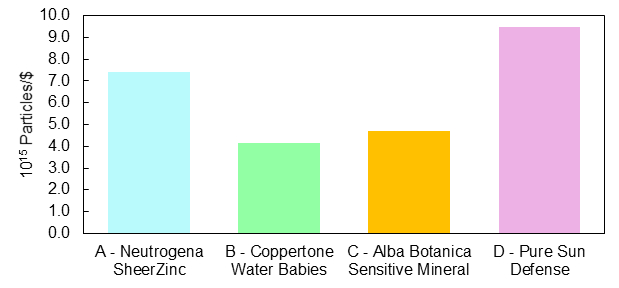

We've been wondering what's in the sunscreen we keep slathering on ourselves and our kids as we practice socially-distanced outdoor activities this summer. Let's find out!
Physical sun blocks commonly use sub-micron titanium dioxide (TiO2) and zinc oxide (ZnO) particles to scatter the sun's harmful UV rays away from skin cells. Other sunscreens use chemical blockers instead, such as avobenzone, octinoxate and oxybenzone, which absorb the light before it reaches the skin. Does this mean chemical sunscreens are so-called "nano-free"? Which sunscreens give more particle-bang for your buck?
We used Spectradyne's nCS1TM to measure the particle content of four different sunscreen formulations: Physical sun blocks SheerZinc by Neutrogena (SPF 50, Sample A), Coppertone Water Babies (SPF 50, Sample B), Alba Botanica Sensitive Mineral (SPF 30, Sample C), and the chemical blocker Pure Sun Defense (SPF 50, Sample D). Being a chemical blocker, sample D did not list the popular ZnO or TiO2 in its list of active ingredients.
Figure 1 at right shows the particle size distribution of each sunscreen formulation as measured by the nCS1. Strikingly, the chemical blocker Pure Sun Defense (Sample D) contains a higher concentration of nanoparticles on the 50 — 300 nm size range than the Coppertone Water Babies (Sample C)! Also interesting is that the Alba Bonanica Sensitive Mineral sunscreen (Sample C) contains a higher nanoparticle content than the Coppertone sunscreen (B), despite holding a lower SPF.
Finally, how do the particles stack up against dollars and cents? While nanoparticle concentration does increase with increasing cost among the physical blockers, you still get the most particles for your dollar with the cheap stuff (see the Figure 2 at right).
You may ask, "Who cares?", to which Spectradyne might respond, "Who says nanoparticle analysis can't be fun?"
This experiment is part of our ongoing EveryDayTM nanoparticles series — read about more nCS1 measurements of commonplace materials here.
Please continue to follow our blog as we share insights, technical details, and generally geek-out with you about nanoparticle science!
Email us for more information, or to discuss your particular application directly.

Figure 1. Particle analysis of four different sunscreens. Sample D is a chemical sun block, but surprisingly contains a higher concentration of nanoparticles than other physical blockers.

Figure 2. Number of particles between 50-300 nm diameter per dollar spent for the sunscreens tested. While sunscreen D, Pure Sun Defense, is a chemical blocker, it is significantly cheaper than the physical blockers that overtly contain nanoparticle based ZnO or TiO2, so the number of particles per dollar is highest.